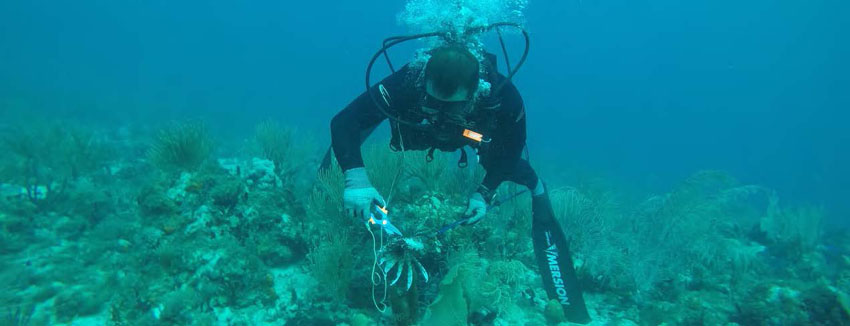Do lionfish in Saint Martin carry ciguatera or not? On May 23-26, two researchers from the University of Guadeloupe caught these fish in situ, with logistical assistance from the Réserve, and we are awaiting their results. These scientists had hoped to catch 30 of this invasive species at different sites in order to detect the presence of ciguatera in their flesh. They could only capture 16 specimens, as the density of lionfish is much lower in Saint Martin than in Guadeloupe. Why? Perhaps this invasive species has more predators in Saint Martin. The Réserve also gave the researchers another 15 lionfish that had been caught earlier and kept in the freezer. According to Julien Chalifour, director of the Reserve’s scientific department, the answer could be complex, in light of tests done last year by the Réserve. Not only does the place where the lionfish are caught and their age play a role, but also the development of the micro-algae that causes the toxin depends on several factors that are not always present at the same time: the saline content and temperature of the sea water, as well as the general conditions of the milieu, as the algae has a better chance of developing on dead coral.
Lionfish and Ciguatera: What is the Answer?
À la pêche au poisson-lion - Fishing lionfish

















